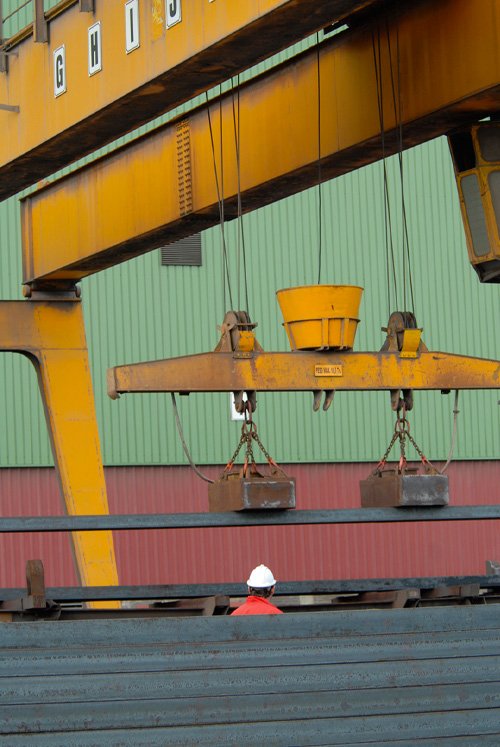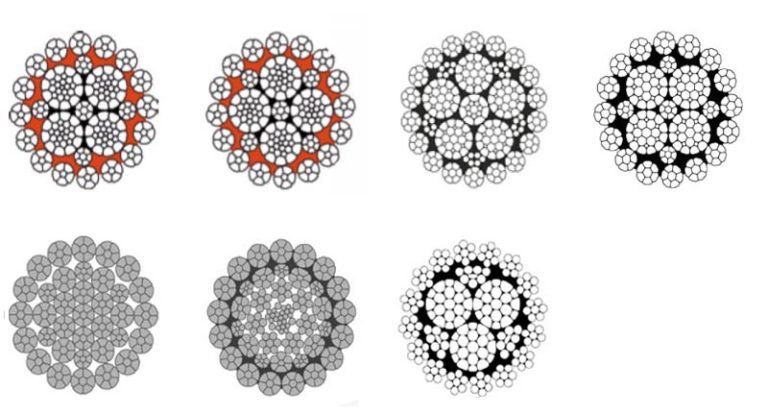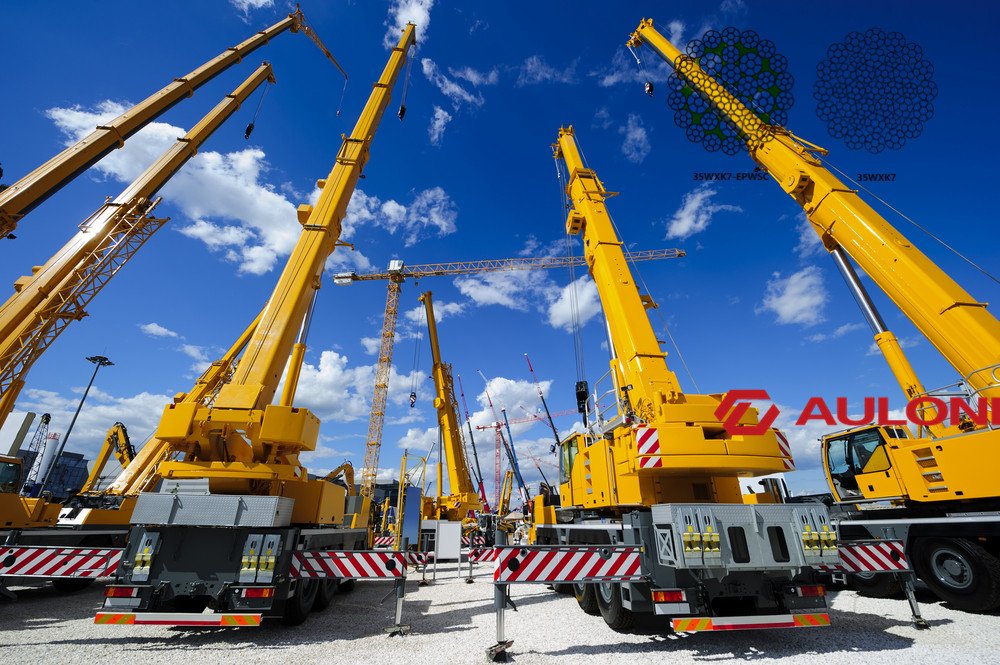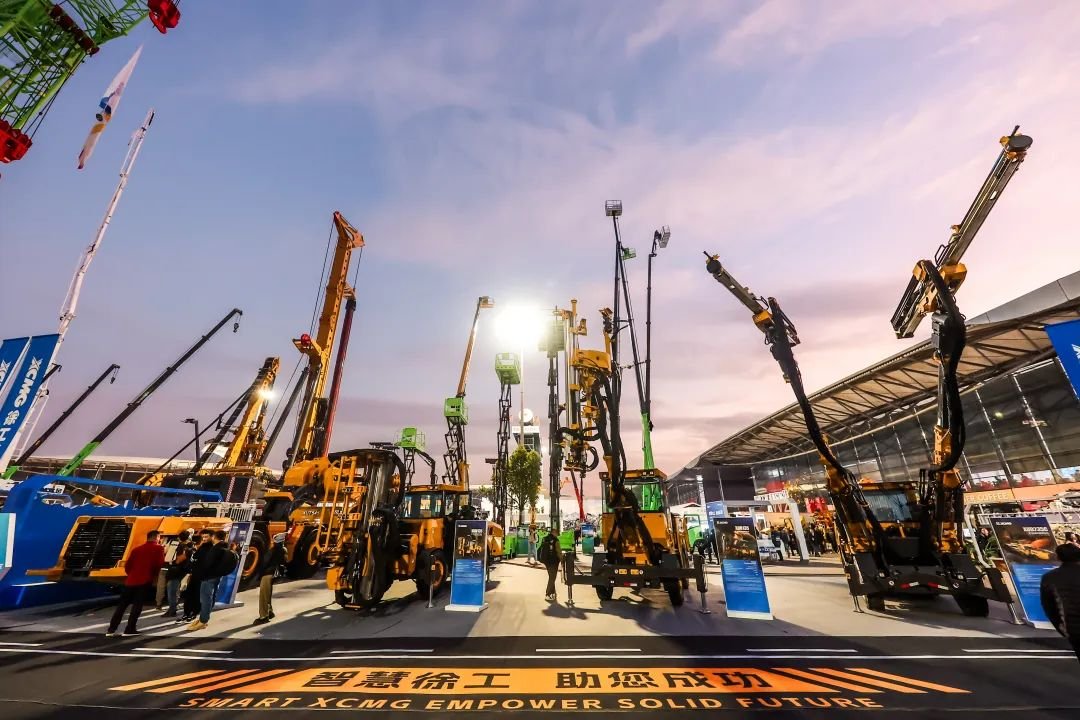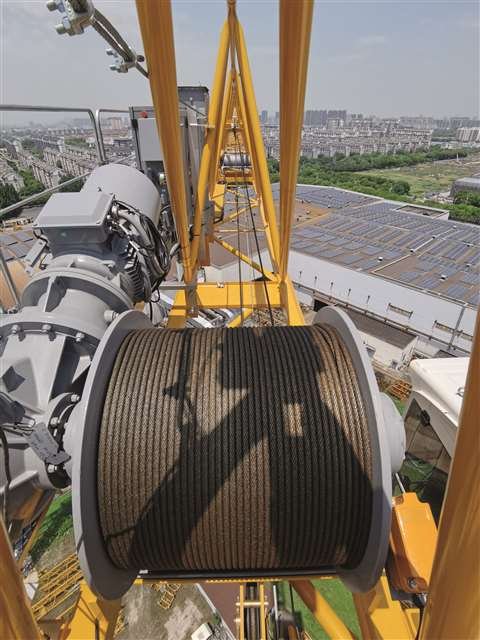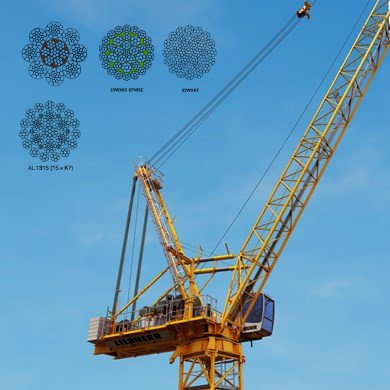Choosing the wrong wire rope core can be a costly mistake. It can lead to equipment damage and serious safety hazards. Let me help you pick the right one.
The main difference is strength versus flexibility. Steel cores (IWRC) are stronger and resist crushing, making them great for heavy lifting. Fiber cores (FC) are more flexible and often used for lighter-duty applications where bending is frequent.
I remember a client from a large construction firm who almost chose the wrong core for a new tower crane. A quick five-minute conversation saved him thousands and prevented a potential project delay. Let’s dive into the details so you can make an informed choice.
When Should You Choose a Steel Core (IWRC) Wire Rope?
Are you dealing with extreme heat, heavy loads, or abrasive conditions? A steel core might be your only safe option. Let’s see why it’s the champion of heavy industry.
You should choose a steel core (IWRC) when your application demands maximum strength, crush resistance, and performance in high temperatures. It is the standard for heavy lifting cranes, mining operations, and multi-layer spooling on drums.

An Independent Wire Rope Core (IWRC) is literally a small wire rope that runs through the center of the main rope. This design choice fundamentally changes how the rope behaves under stress. It is not just a filler; it is an active structural component.
Unmatched Strength and Breaking Load
The primary job of a wire rope is to lift heavy things safely. The strength comes from the total amount of steel in its cross-section.
An IWRC adds more steel to the rope’s construction compared to a fiber core of the same diameter. This directly increases its minimum breaking load. The steel core actively supports the outer strands, helping them share the load more evenly and reducing internal stress. All our high-performance ropes, including those with IWRC, are manufactured to meet or exceed standards like EN12385-4, ensuring you get a product with a reliable and certified breaking strength.
Superior Crush Resistance
Imagine winding a rope onto a winch drum under heavy tension. As you add more layers, the pressure on the bottom layers becomes immense. This is where crush resistance is critical.
A fiber core can be squeezed flat under such pressure, deforming the rope and causing catastrophic failure. A steel core, however, provides a solid foundation that prevents the rope from flattening. It maintains the rope’s round shape, ensuring smooth spooling and protecting the outer strands from damage.
This is why IWRC is non-negotiable for applications like:
- Main hoist lines on mobile and tower cranes.
- Draglines and shovels in mining.
- Any multi-layer drum winding system.
Performance in High-Temperature Environments
Many industrial environments involve high heat. Steel mills, foundries, or even just equipment operating in hot climates can expose wire ropes to elevated temperatures.
A fiber core, especially a natural one, can dry out, become brittle, and lose its structural integrity in the heat. A synthetic core has an even lower melting point. A steel core is unaffected by temperatures that would destroy a fiber core, making it the only safe choice for high-heat applications.
IWRC Application Quick Guide
To make it easier, here is a simple table to guide your decision.
| Application | Why IWRC is Recommended | Key Consideration |
|---|---|---|
| Crane Hoist Lines | Requires the highest possible breaking load. | Ensure proper lubrication to minimize internal friction. |
| Mining Shovels/Draglines | Faces extreme abrasion and crushing pressure. | Regular and thorough inspection for broken wires is vital. |
| Piling Rigs | Experiences high shock loads and crushing on the drum. | Select a rope with a high tensile grade for durability. |
| High-Rise Elevator Ropes | Demands strength and minimal stretch over its service life. | Use specific elevator rope constructions engineered for this task. |
And When is a Fiber Core (FC) the Better Choice?
Strength is not always the most important factor. Sometimes, you need a rope that can bend and flex without giving up. That’s where fiber cores shine and offer unique advantages.
Choose a fiber core (FC) for applications that require greater flexibility and elasticity. It’s ideal for ropes that run over smaller sheaves or in applications where the rope needs to absorb shock loads and crushing is not a concern.
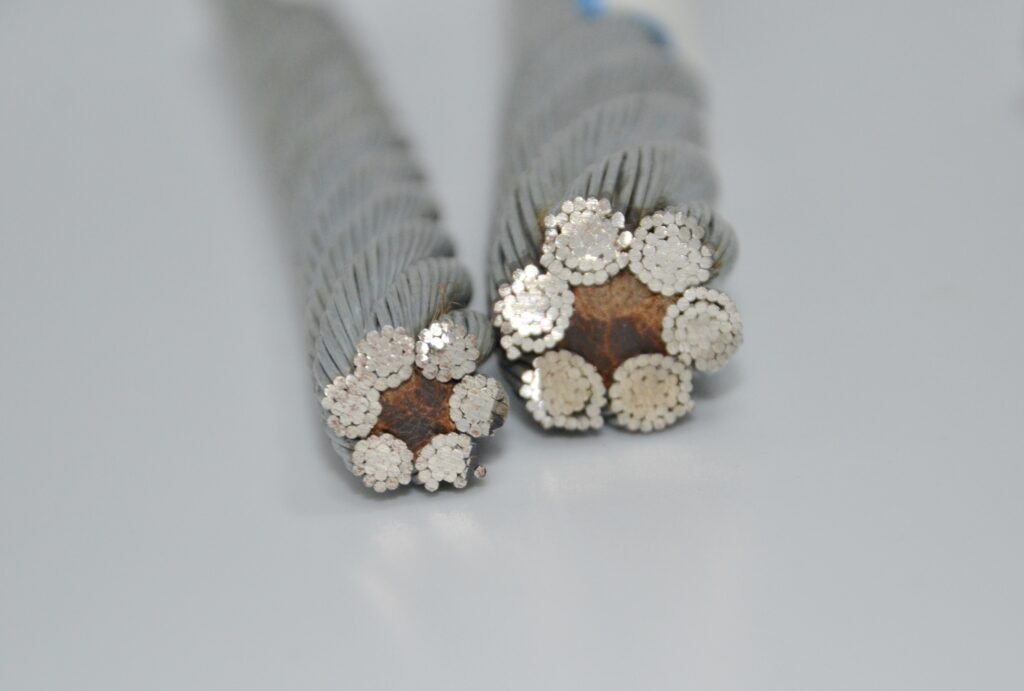
A fiber core takes the place of a steel core in the center of the rope. This core can be made from natural fibers like sisal or synthetic materials like polypropylene. This simple change makes the rope significantly more pliable.
The Advantage of Flexibility
The biggest selling point of an FC rope is its flexibility. The soft core allows the outer strands to move more freely, so the rope can easily bend around smaller diameter sheaves and pulleys without building up excessive internal stress.
This makes it a great choice for:
- General-purpose slings for lifting.
- Garage door cables.
- Stationary guy wires or support lines.
- Some older, low-speed elevator models.
The added elasticity also helps an FC rope absorb shock loads better than the more rigid IWRC rope, which can be an advantage in certain situations.
A Built-in Lubrication Reservoir
A hidden benefit of the fiber core is its ability to act as a sponge for lubricant. During manufacturing, we impregnate the fiber core with a specialized rope lubricant.
As the rope is used, flexing and bending under load, it gently squeezes the core. This action releases small amounts of lubricant from the inside out, providing continuous lubrication to the inner wires. This process reduces internal friction, fights corrosion, and can significantly extend the rope’s service life, especially in damp or humid conditions.
Natural vs. Synthetic Fiber Cores
Not all fiber cores are the same. The material used has a big impact on a rope’s performance.
| Core Type | Material | Advantages | Disadvantages |
|---|---|---|---|
| Natural Fiber Core (NFC) | Sisal, Jute | Excellent lubricant absorption and retention. | Can be susceptible to rot or drying out in extreme environments. |
| Synthetic Fiber Core (SFC) | Polypropylene (PP) | Totally resistant to moisture, chemicals, and rot. | Has a lower temperature limit than NFC; can’t absorb as much lubricant. |
We typically recommend synthetic cores for marine environments or where chemical exposure is a risk. Natural cores are a great general-purpose choice.
When to Avoid a Fiber Core
To make a good decision, you must also understand the limitations. An FC rope is the wrong choice for:
- Heavy Lifting: Its breaking strength is approximately 7.5% lower than an IWRC rope of the same size and construction.
- Crushing Environments: Never use an FC rope on a multi-layer winch drum. It will be destroyed.
- High Temperatures: The core can melt or degrade, compromising the entire rope.
How Do IWRC and FC Affect Rope Diameter and Weight?
The core does not just change performance; it also changes the rope’s physical properties. This can impact your equipment design, logistics, and even operational costs. Let’s compare them side-by-side.
For the same diameter, an IWRC rope is heavier and has a higher breaking strength than an FC rope. The steel core adds to the metallic area, increasing both the weight and the load-bearing capacity of the rope.
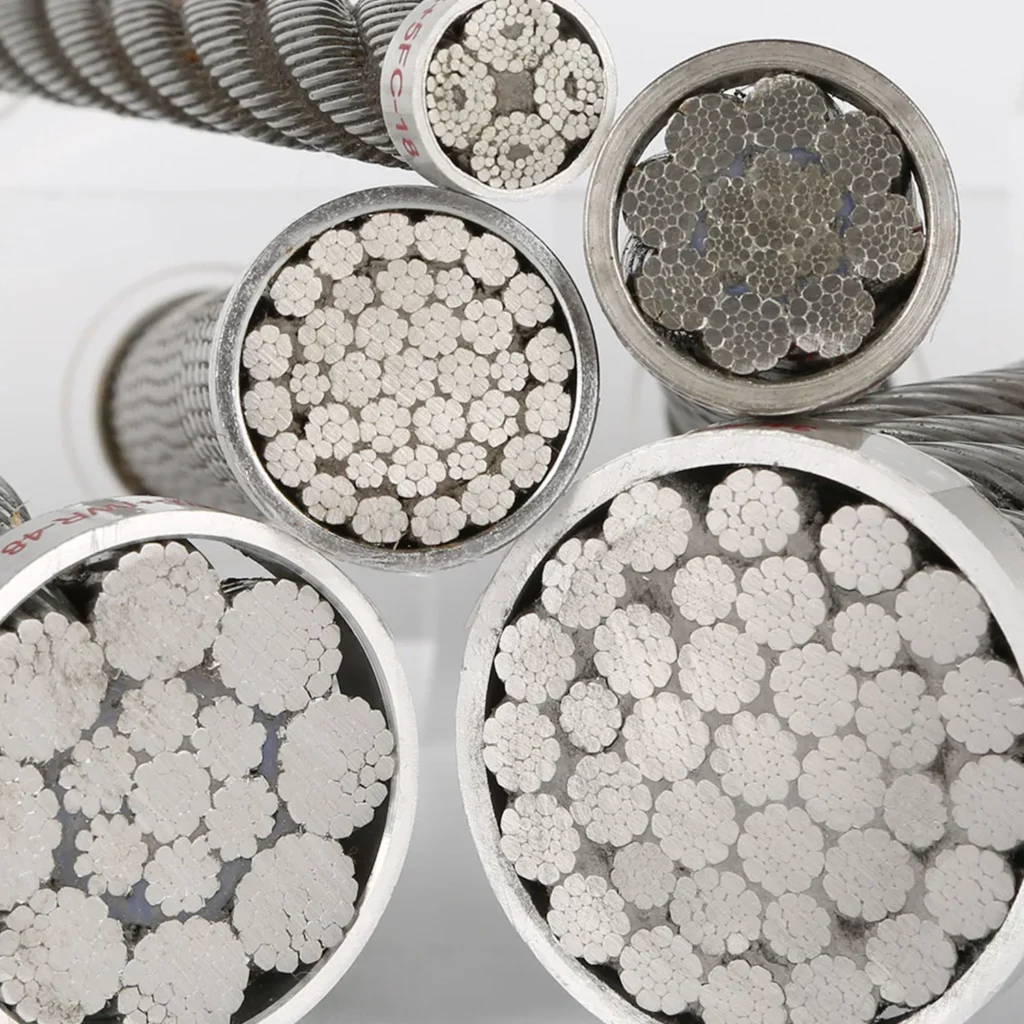
Thinking about how a rope is built helps to understand this easily. A wire rope is essentially a collection of steel wires twisted together. Its strength and weight come from this steel.
Understanding Metallic Area
The metallic area is the total cross-sectional area of all the steel wires in a rope. It is the single most important factor determining a rope’s breaking strength.
When you use an IWRC, you are adding a small steel rope to the center. This increases the total metallic area. When you use a fiber core, you are using a non-metallic spacer. It contributes nothing to the rope’s strength.
Impact on Strength and Weight
Because an IWRC rope contains more steel, it is about 10% heavier than an FC rope of the same diameter and construction.
More importantly, this extra steel gives it a significant strength advantage. An IWRC rope is typically about 7.5% stronger than its FC counterpart. While that might not sound like much, it can be the difference between using a 20mm rope and a 22mm rope, which has cost and design implications.
IWRC vs. FC at a Glance (Example: 20mm 6×36 Rope)
This table shows a typical comparison. The exact values may vary based on the specific rope construction and steel grade.
| Property | IWRC (Steel Core) | FC (Fiber Core) | The Difference |
|---|---|---|---|
| Approx. Weight (kg/100m) | ~170 kg | ~155 kg | IWRC is ~10% heavier. |
| Min. Breaking Load (kN) | ~290 kN | ~268 kN | IWRC is ~7.5% stronger. |
| Crush Resistance | Excellent | Poor | IWRC is vastly superior. |
| Flexibility | Good | Excellent | FC bends more easily. |
This trade-off is central to your decision. Do you need the absolute maximum strength and crush resistance, or is flexibility and lower weight more important for your job?
What Certifications and Customizations Are Available for Different Cores?
Choosing the right core is the first step. You also need to ensure your rope meets international standards and is tailored for your specific working environment. Let’s talk about quality assurance.
Both IWRC and FC wire ropes can and should be manufactured to comply with standards like EN12385-4. We can provide third-party certifications like ABS, DNV, and BV, and offer customizations like galvanization for both core types.

A wire rope is a critical piece of safety equipment. At our factory, we take quality and certification very seriously. Whether you choose IWRC or FC, you need a rope that you can trust.
The Importance of Standards
Standards like EN12385-4 are not just suggestions; they are a framework that dictates a rope’s minimum performance characteristics. This includes:
- Diameter tolerances
- Tensile strength of the wires
- Minimum breaking load
- Manufacturing quality
When you buy a rope that complies with a recognized standard, you are buying a product with guaranteed levels of safety and performance.
Third-Party Certification: Your Peace of Mind
For many of our clients in the marine, offshore, and heavy lifting industries, internal quality control is not enough. They require verification from an independent third-party classification society.
We have extensive experience in this area and can arrange for inspection and certification from bodies like:
DNV(Det Norske Veritas)ABS(American Bureau of Shipping)RMRS(Russian Maritime Register of Shipping)BV(Bureau Veritas)CE
This documentation ensures the rope is fit for its purpose and meets the strict requirements for use in critical applications, providing you and your insurers with complete peace of mind.
Customization Options
Every job is unique. We can tailor your wire rope to match your exact needs.
| Feature | Available for IWRC? | Available for FC? | Best For… |
|---|---|---|---|
| EN12385-4 Compliance | Yes | Yes | All professional applications. |
| Third-Party Certs | Yes | Yes | Marine, offshore, and critical projects. |
| Galvanization | Yes | Yes | Corrosive environments (marine, coastal, chemical). |
| Plastic Impregnation | Yes (Recommended) | No | Extremely harsh, abrasive, and corrosive conditions. |
| Customized Logo | Yes | Yes | Branding for distributors and original equipment manufacturers. |
Plastic Impregnation (PI) is a particularly valuable option for IWRC ropes used in the toughest environments. A layer of plastic is extruded over the steel core, locking in lubricant for the life of the rope and creating an impenetrable barrier against grit, dirt, and moisture.
Conclusion
Choosing between IWRC and FC depends on your specific needs for strength, flexibility, and environment. We can help you select and customize the perfect rope for your application.

